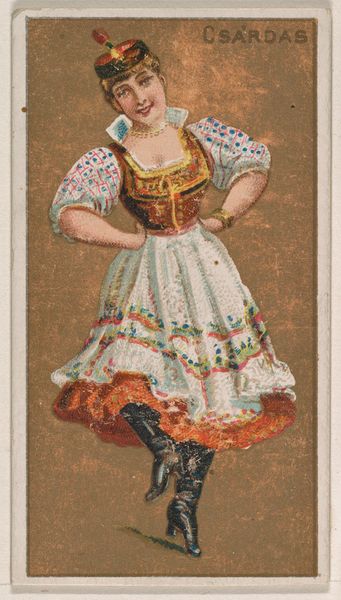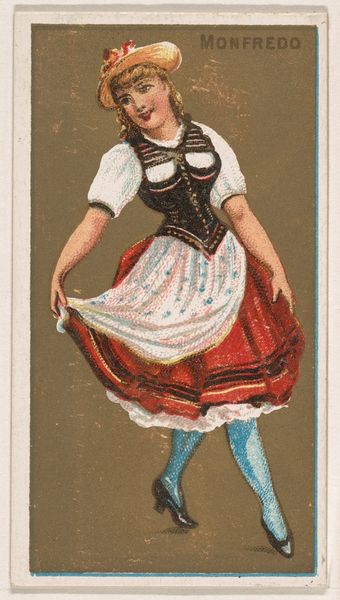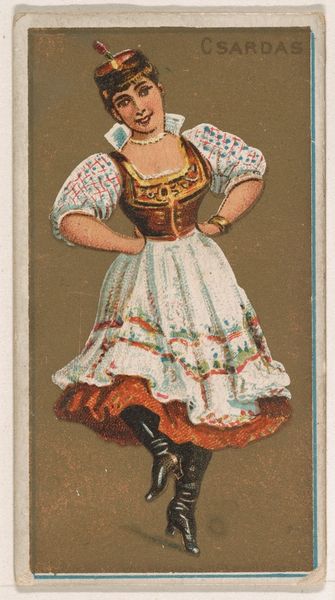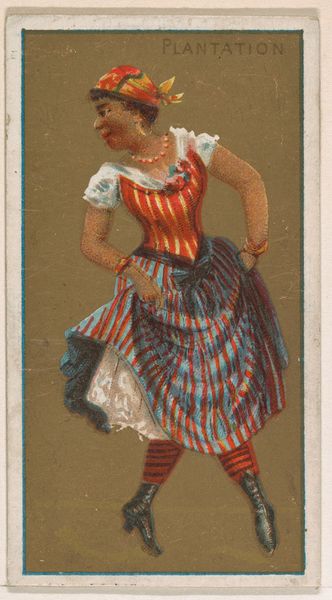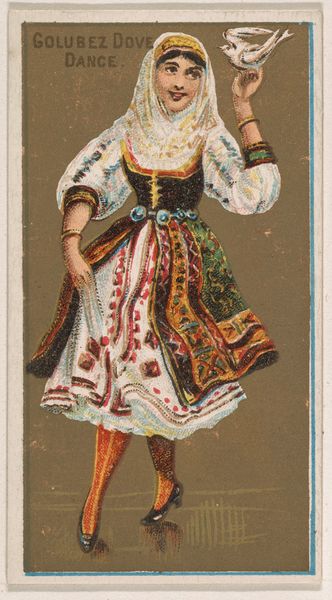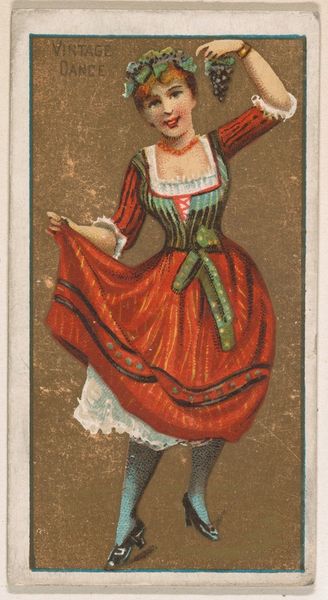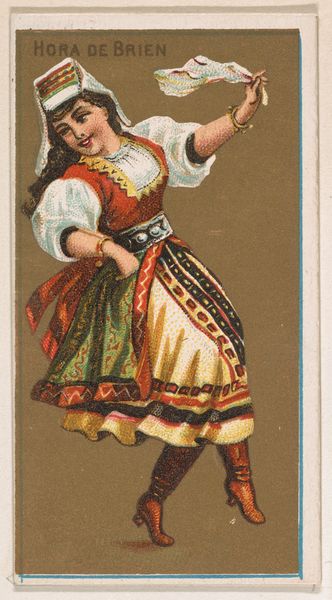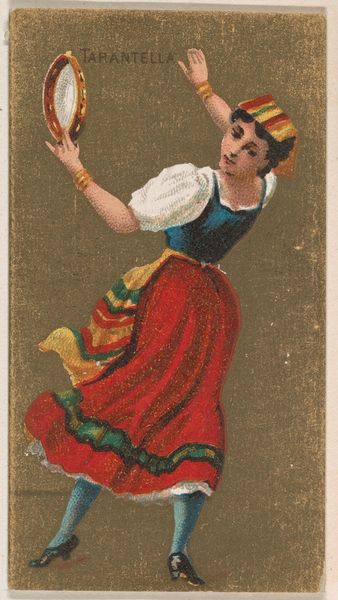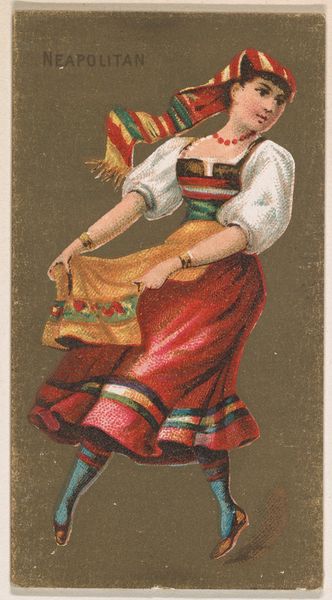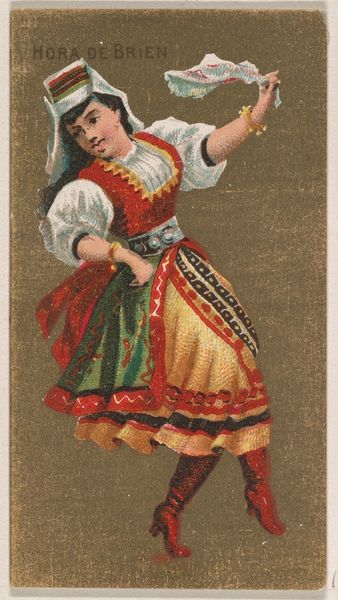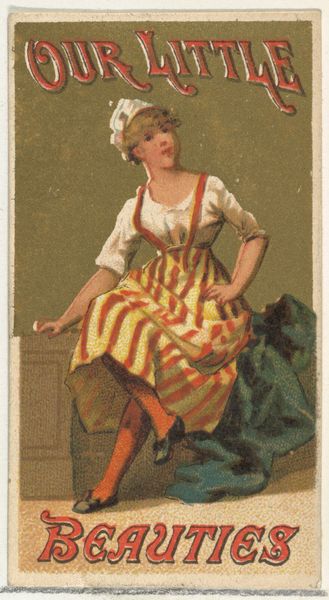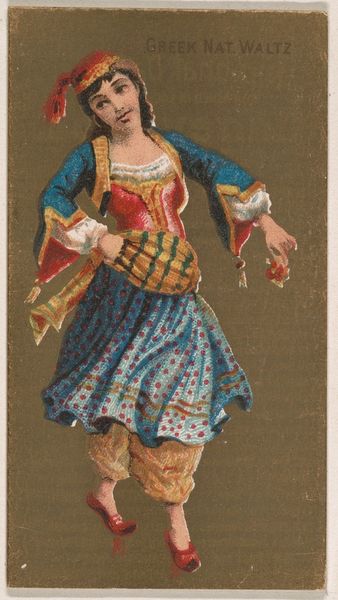
Tyrolean, from National Dances (N225, Type 1) issued by Kinney Bros. 1889
0:00
0:00
drawing, coloured-pencil, print
#
portrait
#
drawing
#
coloured-pencil
# print
#
coloured pencil
#
orientalism
#
watercolour illustration
#
genre-painting
#
decorative-art
#
portrait art
Dimensions: Sheet: 2 3/4 × 1 1/2 in. (7 × 3.8 cm)
Copyright: Public Domain
Editor: Here we have "Tyrolean," a coloured pencil drawing from 1889 by the Kinney Brothers Tobacco Company, part of their National Dances series. The bright colours and distinct outfit give it a somewhat idealized, performative feel. What do you see in this piece? Curator: This is a fascinating example of how cultural identity becomes packaged and consumed. Notice how the "Tyrolean" woman, with her distinctive dress, isn’t merely depicted, but performed for the viewer. The costume itself functions as a potent symbol. Consider the hat: its feather, color and shape signify regional identity and social status. It’s all very deliberate. Do you think the artists aimed for accurate ethnographic representation, or something else entirely? Editor: I'd guess it's less about accuracy and more about creating a marketable image – a kind of exotic fantasy for consumers. So the symbolism might be more about what the *audience* associates with that culture? Curator: Precisely! The image taps into pre-existing notions about Tyrolean culture, distilling it into easily digestible, visually appealing tropes. It invites the consumer to possess, in a way, a piece of that culture through this small card. Think about the role of dance itself – how does that fit in with cultural memory? Editor: Interesting! The dance becomes a kind of shorthand, quickly communicating "Tyrolean-ness". It simplifies the culture but also keeps it alive, albeit in a commodified form. Curator: And consider the role of these images in shaping public perceptions of different cultures at that time. These aren’t just pretty pictures; they actively construct cultural narratives. What’s your biggest take-away? Editor: I now see that even a small, seemingly simple image like this can be loaded with meaning, telling us less about the subject and more about the people viewing and interpreting it. Curator: Exactly. It prompts us to question whose stories are told, and how they’re being told.
Comments
No comments
Be the first to comment and join the conversation on the ultimate creative platform.
